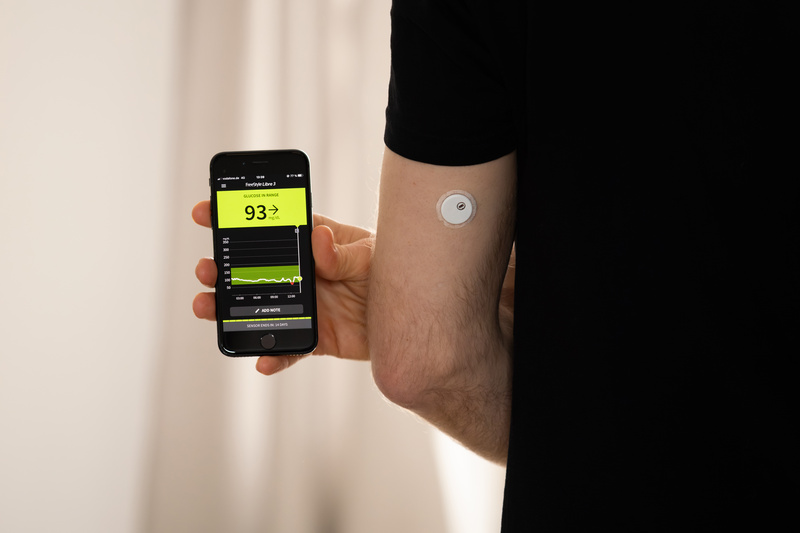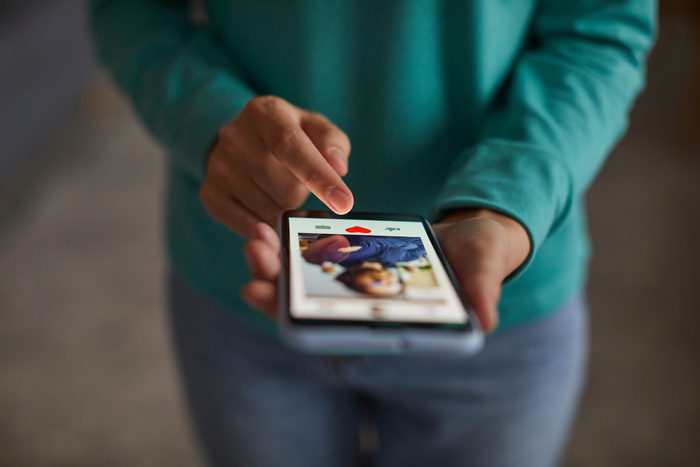Advertisements
The Technology that Takes Care of Your Health is in Your Hands

Using apps to monitor blood glucose is an essential routine for those who have diabetes or want to monitor their metabolic health. In fact, with this evolution of technology, it is no longer necessary to rely solely on manual devices.
Today, there are apps that make this monitoring more practical and efficient, all in the palm of your hand.
These apps combine simplicity with advanced functionality, allowing users to have more precise control over their blood glucose levels and other important indicators.
But with so many options on the market, choosing the ideal app can seem like a difficult task. So, to get to know the best ones and understand everything about them, keep reading and find out how to download them.
What are glucose monitoring apps and how do they work?
Glucose monitoring apps are technological tools that simplify the process of controlling blood sugar levels.
Essentially, they function as a digital assistant, gathering important data and helping the user make informed decisions about their health.
Along these lines, most of these apps can be connected to continuous glucose sensors (CGMs), such as the FreeStyle Libre or Dexcom. These devices measure blood glucose in real time and send the data to the app.
And, even for those who don't use sensors, apps are also useful, as it is possible to manually enter the values measured with a glucometer and complement them with information about meals, physical activities and medications that were taken.
Use of AI (Artificial Intelligence)
Some apps use artificial intelligence to identify patterns and provide insights. For example, the app might alert you to trends in high blood sugar levels after specific meals or suggest routine adjustments to avoid surprises.
And no, it’s not difficult to visualize. This data is displayed in an intuitive way, usually through graphs and reports that can be shared with healthcare professionals.
Additionally, many apps have a user-friendly interface and are available on multiple platforms, such as Android and iOS, ensuring accessibility for different audiences.
Why Use a Glucose Monitoring App?
Using an app to monitor glucose offers several benefits, especially for those looking for practicality in taking care of their health.
1. Practicality in everyday life
The first major advantage is practicality. Apps replace traditional recording methods, such as notebooks or spreadsheets, centralizing all information in one place.
This means that the user can access their history at any time, quickly and in an organized manner.
2. Risk reduction
With features like alerts and notifications, these apps help reduce the risk of diabetes-related complications.
For example, notifications can warn you about dangerous glucose levels or remind you to take medication or take measurements.
3. Improved engagement
Taking care of your health isn’t always easy, but apps make it more engaging. Many of them offer rewards, tips, and even games to encourage users to keep track of their daily routines.
4. More informed decision making
The graphs and analyses provided by the apps help to better understand how external factors, such as diet and physical activity, influence blood glucose levels, which allows the user to adjust habits more effectively and based on data.
5. Support for medical treatment
Detailed reports generated by apps are a valuable tool during medical consultations. They provide accurate information that helps healthcare professionals adjust treatments and offer more personalized advice.
In short, all of this makes monitoring a more complete experience, helping to improve quality of life and diabetes control.
Main Features of Glucose Monitoring Apps
Glucose monitoring apps offer a variety of features that make health care more efficient. Here are the main ones:
- Synchronization with Medical Devices
Many apps can be connected to continuous glucose sensors or glucometers, providing automatic, real-time updates on blood glucose levels. - Custom Alerts
Most apps allow you to set up notifications to remind you to measure your glucose levels, take medication, or adjust your eating habits. These alerts are essential to avoid forgetting. - Detailed Reports
Custom graphs and reports help visualize trends over time. This data can be shared with clinicians, making it easier for them to follow up with their patients. - Trend Analysis
Artificial intelligence-based resources offer insights into how factors such as diet, physical activity or stress influence blood glucose levels, allowing adjustments to be made to your routine. - Food and Exercise Log
With the ability to record meals, carbohydrate counting and physical activities, the apps help to understand the relationship between lifestyle and glucose control.
Top 5 Apps to Monitor Glucose
Now that you understand a little more about how these applications work and what they have to offer you, how about seeing some options for you to download?
Check out the list below with the name and features of each app so you can see which one best suits your preferences.
Glucose Buddy
Glucose Buddy is one of the most complete apps on the market, with features for recording blood sugar, food intake and even insulin administration. It also offers detailed reports and personalized reminders.
mySugr — Control your diabetes!
Known for its user-friendly interface, mySugr makes monitoring a lighter and more fun experience. It offers features like carb counting and reports that can be sent to your doctor.
Diabetes – Blood Sugar
Ideal for those looking for simplicity, this app offers basic blood sugar recording and monitoring functions, as well as easy-to-understand graphs.
FreeStyle LibreLink
Compatible with FreeStyle Libre sensors, this app allows you to monitor glucose levels continuously, displaying trends and detailed reports directly on your phone.
Diabetes:M
With advanced analysis tools, Diabetes:M is ideal for those who want more in-depth control. It includes functions such as meal planning and integration with medical devices.
Tips for Getting the Most Out of Your Glucose Monitoring App
To install any of these applications, see the simple tutorial we made for you below:
- Choose an App That Fits Your Routine
If you use glucose sensors, choose apps that offer integration. If you prefer manual recording, opt for simple and intuitive tools. Also, tap the button below to select the app you want to access:
- Set up Alerts and Goals
Use reminders and notifications to stay consistent in your monitoring and reach your glycemic control goals. - Enter Complete Data
Record not only your glucose levels, but also your meals, medications, and physical activity. This helps you better understand the factors that influence your health. - Review Reports Regularly
Monitoring graphs and reports allows you to identify patterns and adjust habits as needed. - Consult a Healthcare Professional
Take the data collected in the app to your doctor's appointments. This will help your doctor make more accurate treatment adjustments.
Ready to get started? So, be sure to follow these steps and download a glucose monitoring app today to transform your health care!
Did you like it? Take a look at the best dating apps too. Read the article below and check it out!
Recommended Content
